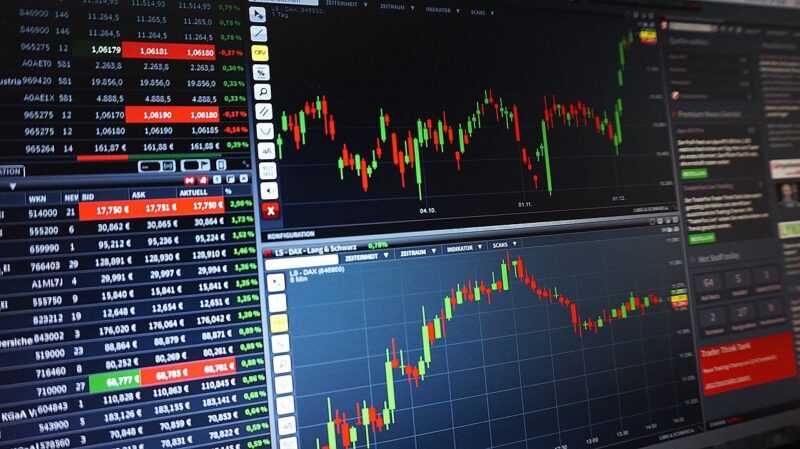Monetary policy is how a country’s central bank, like the Federal Reserve in the U.S. or the European Central Bank, controls the supply of money and interest rates to manage economic growth.
The goal is to keep inflation low, support employment, and ensure that the economy runs smoothly.
In simple terms, monetary policy involves actions that influence how much money is circulating in the economy, which in turn affects how much people spend, borrow, and invest.
Types of Monetary Policy
1. Expansionary Monetary Policy
Expansionary policy is used when the economy needs a boost. This typically happens during a recession or when unemployment is high. The central bank lowers interest rates and expands the money supply.
- How does it work?
- Lowering interest rates: Lower interest rates make borrowing cheaper for businesses and individuals, encouraging them to spend and invest more.
- Increasing money supply: Central banks may buy government bonds or other assets to inject more money into the economy.
The aim of expansionary policy is to encourage more spending and investment, helping the economy grow.
2. Contractionary Monetary Policy
Contractionary policy is used when the economy is growing too quickly and inflation (the rise in prices of goods and services) is a concern.
- How does it work?
- Raising interest rates: Higher interest rates make borrowing more expensive, which can reduce spending and slow down the economy.
- Decreasing money supply: The central bank may sell government bonds or take other measures to take money out of circulation.
The goal of contractionary policy is to prevent the economy from overheating and to control inflation.
Key Tools of Monetary Policy
Central banks employ several kinds of methods to execute monetary policy. The most common tools include:
1. Open Market Operations (OMOs)
This is when the central bank buys or sells government securities (like bonds) in the open market. Buying securities increases the money supply, while selling them reduces it.
2. Interest Rates
The benchmark interest rate is established by central banks; in the US, this is also known as the “federal funds rate.”. By changing this rate, the central bank affects how much it costs for banks to borrow money from each other. This, in turn, influences the interest rates that banks offer to businesses and consumers.
3. Reserve Requirements
This is the amount of money that banks are required to keep in reserve and not lend out. By changing the reserve requirement, central banks can control how much money banks can lend and, thus, affect the money supply.
How Does A Monetary Policy Impact the Economy?
Monetary policy affects everyone in the economy, from consumers and businesses to the government. Here’s how:
1. Inflation Control
One of the main objectives of monetary policy is to control inflation, which is the rate at which prices for goods and services rise. A high rate of inflation reduces purchasing power. If it’s too low, it can signal economic stagnation.
- Expansionary policy is used to prevent deflation (falling prices) by stimulating spending.
- Contractionary policy is used to prevent inflation from rising too high by slowing down demand.
2. Economic Growth
When the central bank lowers interest rates and increases the money supply, it stimulates economic activity. Businesses are more inclined to make investments, grow, and add employees. This leads to higher production, more jobs, and stronger economic growth.
On the other hand, contractionary policy helps prevent an economy from growing too fast and keeps growth sustainable.
3. Employment
A stable economy with low inflation and steady growth is key to maintaining low levels of unemployment. By using monetary policy, central banks can influence job creation. When the economy grows, businesses expand, and new jobs are created, lowering unemployment rates.
How Does Monetary Policy Impact You?
Monetary policy affects almost every aspect of your financial life:
- Loans and Mortgages: If interest rates are low, borrowing money becomes cheaper. This can make it easier to buy a home or finance a car. However, higher interest rates can make these loans more expensive.
- Savings: When interest rates are low, savings accounts and other fixed-income investments yield lower returns. On the other hand, higher interest rates make saving more attractive, as you’ll earn more interest on your deposits.
- Job Market: If the central bank lowers interest rates to boost economic activity, businesses may expand and hire more people, which leads to more job opportunities.
How Does Monetary Policy Impact You?
- Loans and Mortgages: If interest rates are low, you might find it easier to get a loan or a mortgage because borrowing money is cheaper.
- Savings: When interest rates are low, you may earn less on savings in banks or fixed deposits. On the other hand, higher rates can give you better returns on your savings.
- Job Market: If the central bank lowers interest rates to stimulate the economy, businesses might expand and hire more people, leading to more job opportunities.
Conclusion: Understanding the Bigger Picture
In order to effectively manage a nation’s economy, monetary policy is essential. While it can be complex, at its core, it’s about controlling the money supply and interest rates to balance inflation, growth, and employment.
Whether the central bank is trying to encourage spending and investment through lower interest rates, or trying to control inflation with higher rates, the ultimate goal is to maintain a stable, healthy economy for everyone.





